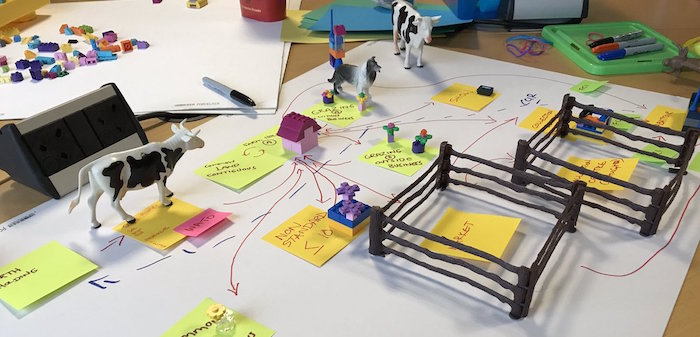Progress is being made in designing a new livestock traceability system to replace eAML2, according to Defra and pig industry representatives engaged in the process.
Defra’s Livestock Information Programme Traceability Design User Group (TDUG) met recently with Lord Gardiner and other senior Defra officials at the Department’s Nobel House headquarters.
TDUG, comprising across representatives from across government and the meat and livestock sectors, is aiming to create a livestock traceability service that will deliver ‘positive productivity, trade and animal health related outcomes’.
After the latest meeting, Lord Gardiner said: “I have heard a compelling narrative today from both industry and government that traceability is important for everybody, needs to work for everybody and can demonstrate that British meat and livestock products are among the very best in the world.
“The future service is central to a competitive sector that can clearly demonstrate that animals have lived a good life. I am ambitious that we use this as a platform to enhance further the British brand and enable wider innovation and modern farming methods that will benefit everybody.”
Marcus Bates, from the British Pig Association and the UK Export Certification Partnership, said the programme addresses four cross-cutting themes of the Defra 2020 strategy by improving data, increasing productivity, enabling better regulation and facilitating international working.
“It can work because the concept of partnership working has evolved and in TDUG we have built a strong partnership between government and industry.
“We have successful models to follow and industry willingness to grasp the potential rewards. We need to do this before the next disease outbreak, not after.
“At present we use several systems for different species. We have the opportunity to build a single system that will provide a foundation on which partners can build additional services. This will encourage all livestock keepers to make the best use of the system.”
NPA chief executive Zoe Davies said: “We are trying to ensure that whatever they come up with will replicate and improve on eAML2, and not make things worse.
“The positive side of the process is that moving towards better traceability for all major species (they’ve dropped horses and camelids for now though) will help during any outbreak situation.”
Traceability and shared data
Simon Hall, Defra Livestock Information Programme Director said leaders from across the meat and livestock sectors demonstrated the need for comprehensive livestock traceability and shared data for both industry and Defra.
“Everybody agreed that traceability is central to a viable, competitive and sustainable meat and livestock industry that produces some of the highest quality products in the world.”
During the afternoon, Chris Harvey, service and product design lead, showed TDUG how the programme was approaching service design using a range of prototyping tools, including miniature farm models (see above), role play and mock technology devices to help understand traceability challenges and design a solution that addresses those issues.
The design element of the programme is now moving into a prototyping phase. TDUG members will be involved directly in that activity. TDUG also approved the IT tender process in principle during this session.




